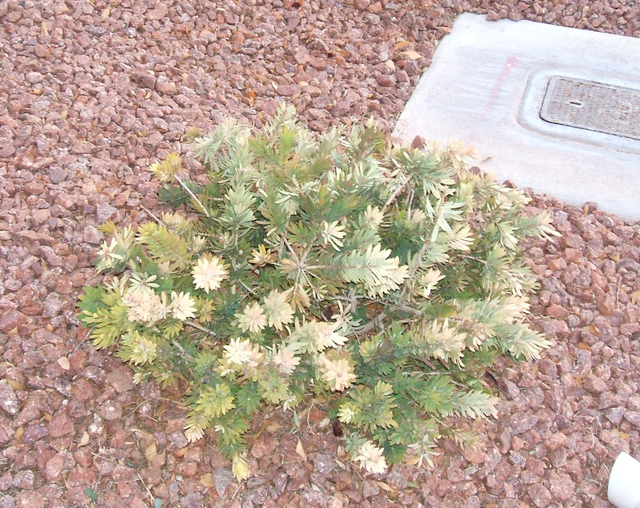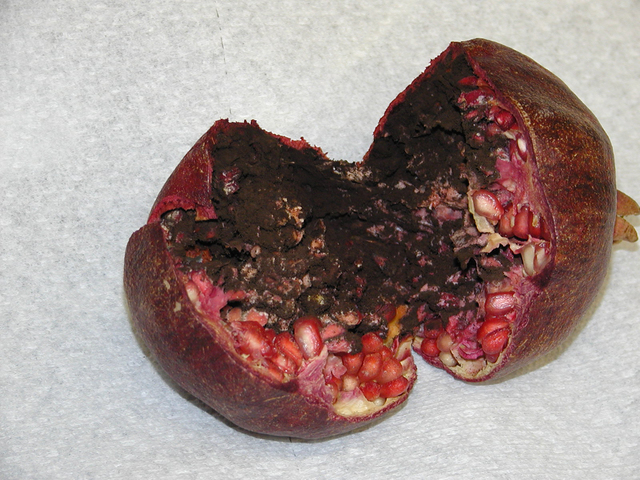Recent rains can create problems with plants
The rain this past weekend may have brought some problems along with it, the same as it did last year after a rain like this. Problems might develop during the coming week or, with some plants, even extend into May or later.
Plants like roses may show signs of powdery mildew disease. This disease is aggravated by cool, wet weather, splashing rain, followed by warm weather. It appears as a white powdery dust on the leaves that can kill them. This disease is usually weak in our climate mostly because of our low humidity and cloudless days.
Pull off a few leaves so air can circulate through the plants and allow them to dry out naturally. Apply a preventive spray of a conventional fungicide for roses, sulfur dust or Neem oil. Lower humidity, air movement and sunlight in the coming days may clear up this problem without pesticides on some plants.
Fire blight is another problem on European and Asian pear. This disease is particularly virulent to many members of the rose family as well as many of our fruit trees.
If these trees were flowering during the rain it is possible the disease may show its ugly head toward the beginning of May. Look for black dieback on new growth, usually close to the infected flowers.
Cut out these stems or branches 12 inches below the infection and sterilize pruning tools after each cut. Bag these infected plant parts and get them off of your property.
Pomegranates that are flowering may develop fruit with a black interior later in the season. This disease can be the result of wet weather when they are flowering. This disease may not appear on fruit until quite a bit later in the season. It does not spread beyond the fruit and the fruit is inedible.
Q: Two out of my three bottle brush bushes look dry and yellowish. The first two years they were fine. Does it mean they are not watered enough?
A: Many plants in general, including bottlebrush, can be damaged if watered either too often or not frequent enough. If you are going to error about watering, it is better to give plants too much water than water them too often. But I think the problem is iron, not water.
Right now, water plants like this once or maybe twice each week at the most. Yellowing of the leaves also can happen because of real low winter temperatures. Similarly, it can also happen if the soil is not improved or covered in rock mulch.
Bottlebrush doesn’t like rock mulch at all and if it is planted in rock mulch it frequently turns yellow in three to five years. If it gets yellow enough, the leaves begin to turn brown and scorch. This is what I think happened to your plants.
Purchase an iron fertilizer and apply it to the soil above the roots now and water it in. The best iron fertilizer contains the letters EDDHA on the label or in the ingredients. EDDHA iron chelate is important for use in desert soils.
Iron applied to the soil will only improve the green color of new growth. The older leaves that are yellow can only be improved with an iron fertilizer solution sprayed on the leaves. Spray this solution in one-week intervals until you get a dark green color.
If these are growing in rock mulch, buy good quality compost, not a soil mix, and spread it around each of the plants and water it in. Apply around one to ½ cubic foot of compost to the base of these plants and water it in, even in rock mulch.
Q: My lilacs have bloomed and the flowers are gone. Is now the time to prune or do nothing? How do you prune or care for lilacs.
A: Most people don’t know that low-chill varieties of common lilac will grow here as well as the Persian lilacs. Plant them in plenty of sunlight but in places which avoid the hot afternoon sun. All lilacs must be planted in composted soil with a wood chip mulch. Rock mulch will not work.
Low-chill varieties do not need as much low temperatures to produce flowers. Lilacs that are not low chill will not produce as many flowers in our warm winter climate. Some plants require long periods of time when temperatures are cold so that flowers will be produced the next year.
Persian lilac may be a better choice for our climate and in smaller yards than common lilac. Persian lilacs are smaller in stature than common lilac, with smaller flower clusters and a lower winter chill requirement.
Hopefully, local nurseries and garden centers that sell lilacs for our climate are selecting low-chill types such as an old-time favorite here called Lavender Lady. I believe this, along with Angel White were the first low chill lilacs available that would grow in the desert Southwest. Many of these low-chill varieties are referred to as the Descanso hybrids.
Lilacs are not desert plants so they require lots of compost mixed in the soil at the time of planting with the soil covered in wood chips that decay over time. They should not be in rock mulch.
As with any seasonal flowering shrub or tree, the best time to prune them is soon after flowering. If pruned later than this, the flowers for next year may not be produced.
First, remove the dead flowers before they form seeds by cutting them off at the base. Next, if needed, cut back branches or stems.
To increase the number of flowers you should increase the number of new branches it produces. Use a “heading cut.” This type of cut is made somewhere along the length of the branch, usually just above a leaf on the outside of the branch.
Heading cuts grow three or four new shoots for every one that is cut that is made. This is an excellent way to make a shrub denser with more flowers.
If the shrub is getting too large, remove one-third of all the longest stems back to within a couple of inches above ground. New stems will grow from just below these cuts.
A radical way of pruning this plant is to totally cut it off just above the soil surface. With plenty of water and some fertilizer, new shoots will grow from these very short stubs resulting in an all-new plant. This is pretty radical but if the plant is overgrown with lots of wood showing, this may be your only alternative.
Remember, after pruning give it plenty of water and fertilize it with an all-purpose fertilizer.
Bob Morris is a horticulture expert living in Las Vegas and professor emeritus for the University of Nevada. Visit his blog at xtremehorticulture.blogspot.com. Send questions to Extremehort@aol.com.


















